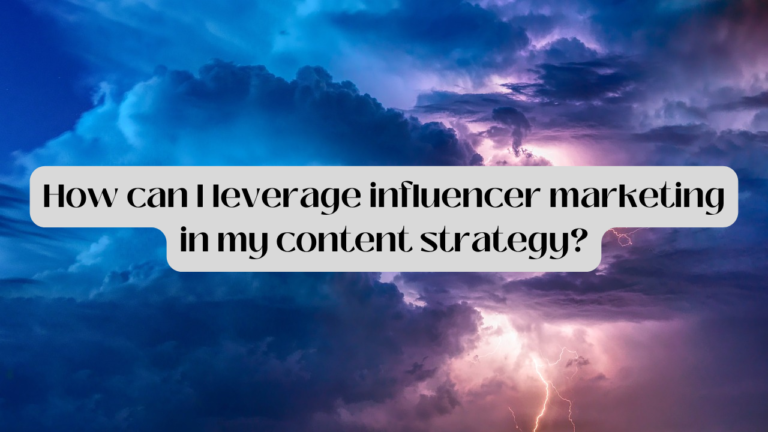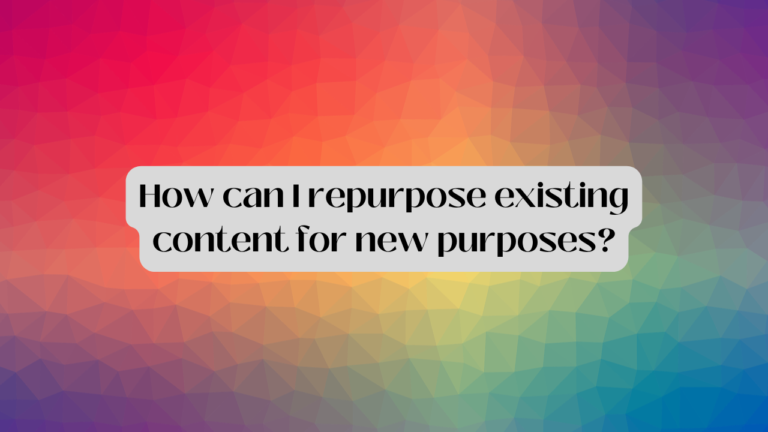How Do I Build An Effective Content Distribution Strategy?
In today’s digital age, creating high-quality content is only half the battle; ensuring that your content reaches the right audience is equally crucial. A well-crafted content distribution strategy can be the key to maximizing the impact of your research findings or insights. By strategically disseminating your content across various platforms and channels, you can amplify its reach, engage a wider audience, and establish your authority in your field. In this comprehensive guide, we’ll delve into the essential components of building an effective content distribution strategy, addressing frequently asked questions and providing actionable insights for researchers.
Understanding Content Distribution Strategy
A content distribution strategy is a systematic plan that outlines how you will share and promote your research content to reach your target audience. It involves identifying the most relevant platforms, channels, and tactics to ensure your content gets the exposure it deserves. While the specifics of your strategy may vary based on your research objectives, audience demographics, and content format, there are several core principles to consider.
Key Components of an Effective Content Distribution Strategy
- Audience Segmentation: Before distributing your content, it’s essential to understand your target audience. Who are they? What are their interests, needs, and pain points? By segmenting your audience, you can tailor your content and distribution channels to resonate with specific groups.
- Content Customization: Adapt your content to suit the preferences of each distribution channel. A one-size-fits-all approach rarely works. Tailor your content to the platform, ensuring it aligns with the channel’s style, format, and audience expectations.
- Platform Selection: Choose the platforms and channels that are most relevant to your audience. These could include your website or blog, social media platforms, academic databases, email newsletters, and more. Consider where your audience spends their time and where your content will have the greatest impact.
- Timing and Consistency: Timing plays a critical role in content distribution. Post your content when your target audience is most active on a given platform. Additionally, maintain consistency in your distribution schedule to build anticipation and credibility.
- Leveraging Social Media: Social media platforms are powerful tools for content distribution. Share your research findings, insights, and articles across platforms like Twitter, LinkedIn, and Instagram. Utilize appropriate hashtags and engage with your audience to foster discussions.
- Collaborations and Guest Posting: Collaborate with influencers, experts, or other researchers in your field. Guest posting on established blogs or platforms can help you tap into their existing audience and gain credibility.
- Email Marketing: Build and nurture an email list to directly reach your interested audience. Send out regular newsletters with valuable insights, updates, and links to your research content.
Frequently Asked Questions (FAQs)
Q1: How do I determine the best platforms for content distribution?
A1: Research where your target audience is most active. Platforms like social media, academic databases, and industry-specific forums can be excellent starting points.
Q2: Is it better to focus on a few platforms or to distribute content widely?
A2: It’s generally more effective to focus on a few platforms where your audience is most engaged rather than spreading yourself too thin. Quality and engagement matter more than quantity.
Q3: How do I measure the success of my content distribution strategy?
A3: Use metrics like website traffic, social media engagement, click-through rates, and conversion rates to gauge the effectiveness of your strategy. Monitor these metrics regularly and adjust your approach as needed.
Q4: What role does SEO play in content distribution?
A4: Search Engine Optimization (SEO) is crucial for ensuring your content ranks high in search engine results. Incorporate relevant keywords, meta tags, and optimize your content for search engines to enhance discoverability.
Q5: How can I repurpose my content for different platforms?
A5: Repurpose your content into various formats such as videos, infographics, podcasts, and slideshows. This allows you to reach different segments of your audience and cater to various content consumption preferences.

An effective content distribution strategy is an integral part of any researcher’s toolkit. By crafting a well-defined strategy that focuses on audience segmentation, platform selection, customization, and engagement, you can ensure that your research content reaches its intended audience and makes a meaningful impact. Keep in mind that distribution is an ongoing process that requires consistent monitoring and adjustments. With a strategic approach, you can amplify the reach of your research findings and contribute to the broader discourse in your field.
So there you have it – the essential elements of content marketing for your business. Dive deeper into these strategies at Gibson Girls Marketing to boost your success.




